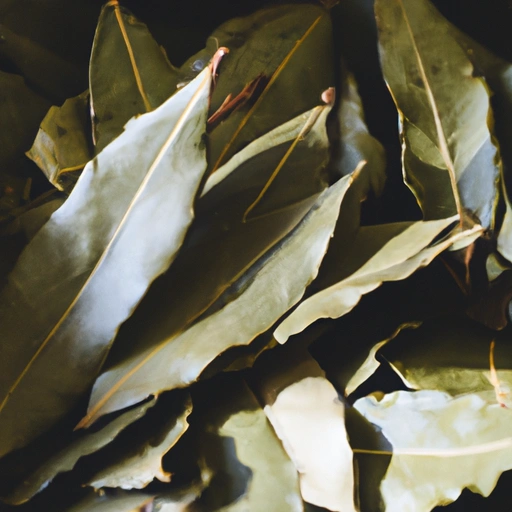Laurel Leaf
Description

Laurel leaf, also known as bay leaf, is the aromatic leaf from the evergreen bay laurel tree, native to the Mediterranean region. It is used as a seasoning in cooking and has a distinctive flavor and fragrance that is slightly floral and herbal. Laurel leaves can be used fresh or dried, although dried leaves tend to have a stronger flavor and are more commonly available. The leaves are usually removed from the dish before serving as they can be sharp and difficult to digest.
Common uses
Laurel leaves are commonly used to flavor soups, stews, braises, and pâtés in Mediterranean, American, and some Asian cuisines. They are also an essential component of a bouquet garni, along with parsley and thyme, used to infuse flavor into stocks and sauces.
Nutritional value
Calories
Laurel leaves are low in calories, with 2 large leaves containing approximately 5 calories (21 kilojoules).
Protein
Laurel leaves contain a negligible amount of protein, less than 0.1 grams per serving.
Fat
The leaves are virtually fat-free, with only trace amounts present.
Carbohydrates
A serving of 2 large leaves contains approximately 1.3 grams of carbohydrates.
Vitamins
Laurel leaves are a source of Vitamin A and Vitamin C, though in small quantities.
Minerals
They contain minerals such as manganese, which is essential for bone health and metabolism.
Health benefits
Laurel leaves have been associated with various health benefits, including digestive and respiratory relief, anti-inflammatory properties, and potential to reduce anxiety and stress. They also contain compounds that may have antioxidant effects.
Potential risks
When consumed in culinary quantities, laurel leaves are generally safe for most people. However, they should not be eaten whole due to the risk of choking or causing blockages in the gastrointestinal tract. Some individuals may also have an allergy to laurel leaves, although this is rare.
Common recipes
Laurel leaves are used in a variety of recipes such as soups like French onion, Italian minestrone, and American-style seafood chowders. They are also included in slow-cooked meals like beef bourguignon, and corned beef.
Cooking methods
The leaves are typically added at the beginning of the cooking process to allow their flavor to permeate the dish. They are used in simmering, boiling, and slow-cooking methods.
Pairing with other ingredients
Laurel leaves pair well with proteins such as beef, chicken, and lamb, and they complement vegetables like carrots, tomatoes, and potatoes. They also work harmoniously with grains such as rice and lentils.
Summary
Laurel leaf is a versatile and essential ingredient in many global cuisines, known for its unique flavor and aromatic qualities. It has a storied history, nutritional benefits, and is employed in a variety of cooking methods, making it a valuable addition to the pantry of chefs and home cooks alike.